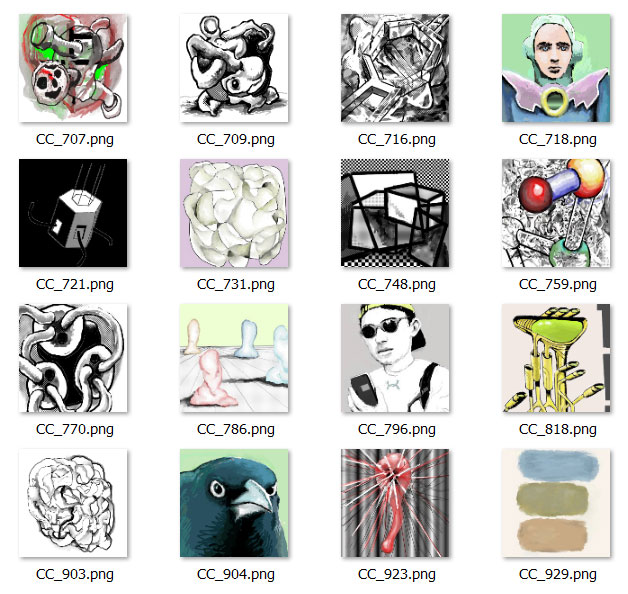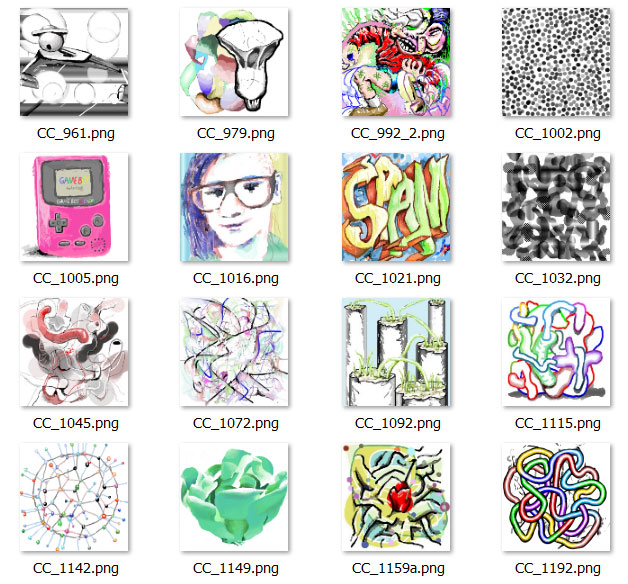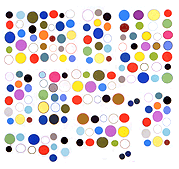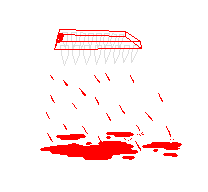

Screenshots of thumbnailized versions of my drawings (to date) on the Computers Club Drawing Society site (titles are on the blog). Thanks to the Society for the generosity in providing the software, platform and community. When I was painting on canvas in the early '90s I worked similarly to this - eclectic subjects painted on 12 x 9 inch canvases, shown in a grid of 20 or so. The CCDS paint software is making me think about photorealism again. The perversity of painting a photograph is heightened by painting the photograph using software. The defiant uselessness (or scrutiny of the underscrutinized, if you want to be nicer) is magnified when you are this many layers removed from any "primary" perception. But I've never been able to stick to any program. Abstraction and lowbrow cartooning continue to be interesting. The grid is a way of unifying all these tendencies, not for the sake of mystical or communitarian coming together but to understand how differences can be flattened out and co-opted.


